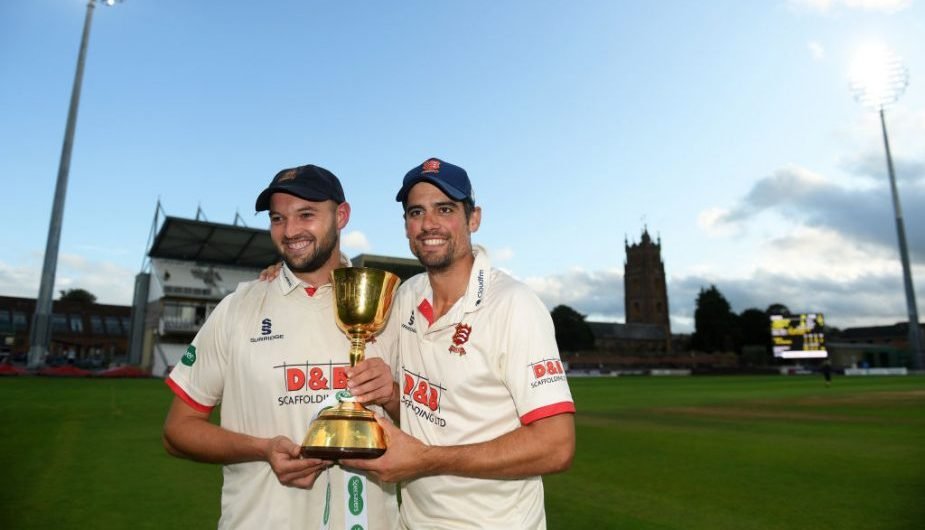What should the purpose of the County Championship be?

Oscar Ratcliffe reflects on the revamp of the English domestic structure.
It was Warren Buffett – investing gazillionaire and a kind of capitalist Confucius –who coined the phrase “Only when the tide goes out do you discover who’s been swimming naked”. It’s become the maxim du jour as companies’ profits nosedive in the wake of a corona-induced recession.
County cricket clubs, even pre-pandemic, were clearly braving a skinny dip. Now it’s a question of sink or swim. Or, more pressingly, stick or twist.
Because disruption brings innovation, and this year the domestic first-class game has seen its most radical shake-up in a generation. The Bob Willis Trophy – this summer’s “one-off” domestic tournament, where teams were divided into three regional groups culminating in a Lord’s final – is here to stay, with the ECB confirming last week that counties will compete for both the trophy and the County Championship in 2021.
Meddling with the county game is like kicking a hornet’s nest. Counties balk at talk of changes to the first-class structure, for fear of prompting the type of awkward questions that have the nasty habit of becoming existential.
But to get a grip on whether these new innovations are feasible we have to tackle that knottiest of issues – the purpose of domestic long-form cricket.
It’s certainly not to produce revenue. Don’t tell the man and his dog, but their presence hasn’t prevented championship games from becoming loss leaders. The pity is that if internet viewing figures for the Bob Willis Trophy Final were anything to go by (where there were 967,000 individual views on Sky Sports’ YouTube channel) there is an audience for this stuff, albeit one that’s neither prepared to give up a day’s holiday nor stump up £30 for the privilege.
In more recent times championship cricket has changed tack, gearing towards producing strong long-form cricketers for England’s Test side.
Two divisions were created 20 years ago, and with that, the step up from Division One to international cricket was made less steep. For a time, this approach paid dividends, with England reaching the top of the Test rankings in 2011 and proven Division One cricketers like Jonathan Trott, Tim Bresnan and Graham Onions coming into the side and hitting the ground running immediately. Some would argue that no promotion and relegation will dilute quality and produce fewer players of this ilk.
Now, however, the way England select players has changed.
Back in May England named a 55-man training cohort for the summer ahead. Miss out on that bumper squad and your international hopes were dead in the water.
In amongst the regulars and a smattering of the tried and tested were 14 uncapped players. The profile of these cricketers tell us much about two divisions as a development strategy.
Of the fourteen, half played Division Two cricket in 2019 and just two were over the age of 26. Three of these graduated to the Test squad at points in the summer: Sussex seamer Ollie Robinson, Gloucestershire keeper-batsman James Bracey (Division Two players in 2019, aged 26 and 23 respectively) and Essex enigma Dan Lawrence (Division One and 23).
Notable absentees from that original 55-man squad included Jamie Porter, 27, with 181 Division One wickets from three previous summers to his name, and Sam Northeast, 31, who hit 969 runs in the top division last year.
Now, take these players and weigh their cases against Robinson’s and Bracey’s. In 2019 Porter took his wickets at an average of 25.70; Robinson’s Division Two wickets cost 16.44 runs apiece. Last year Northeast’s Division One runs came at an average of 51.00; Bracey, in the lower division, scored his at 33.85.
Robinson’s figures are perhaps of the unignorable sort and whilst there is some drop-off in standard from one division to the other in cricket, it is not quite as acute as in football, from the Premier League to the Championship. But it seems that the question of whether the Sussex man would be as effective in the top division, as far as England selectors are concerned, is a moot point; his selection over a similar type of bowler who excelled in Division One tells its own story.
Northeast has an even greater grievance to air – not only did he score his runs at nearly 20 a piece more than Bracey, but he did so against supposedly superior bowlers. So, what can be at play here?
Last winter England Lions beat Australia A in a first-class match Down Under. Notable entries on the scorecard from that victory include a first-innings 125 from Lawrence, a knock of 65 from Bracey and match figures of 7-147 for Robinson. Less notable was Northeast’s score of 1 and, well, Porter didn’t make the team.
The only logical conclusion to be drawn is that performances in a single match for the England ‘A’ team trump a season’s worth of toil in Division One. County cricket is not the breeding ground it once was and bridging the gap to international cricket now is left to the England set-up via representative sides and coaching programmes.
In short, arguments for divisional county cricket as a vehicle for readying cricketers for Test cricket are moribund. These days the division you perform in doesn’t carry the same weight as youth and malleability.
So where does this leave the County Championship?
Perhaps, the survival of all 18 first-class counties and a more sustainable future is a worthy (and far from modest) ambition. In terms of structure this means a shorter season in three divisions with smaller squads. Cancelling player contracts and laying off staff will be a painful but necessary trade-off because there is a future where those live-stream viewers of the Bob Willis Trophy Final might translate into bums on seats.
County administrators could do worse than sticking to another Buffettism – “Predicting rain doesn’t count. Building arks count.”
Oscar Ratcliffe writes at Ballanced Opinions

